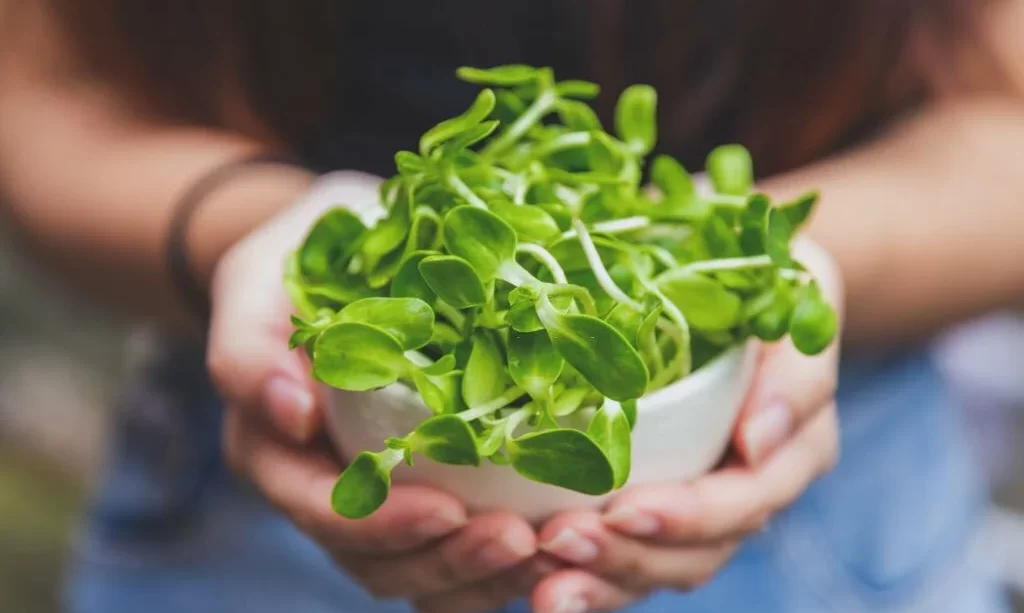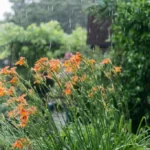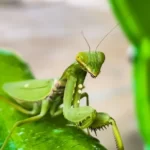Sunflowers, with their brilliant yellow blooms and cheerful countenance, have a special place in gardens and landscapes. These towering flowers not only brighten our outdoor spaces but also serve as a source of fascination for gardeners and nature enthusiasts. One of the keys to successfully growing sunflowers is knowing when to transplant the seedlings from pots to the garden. In this guide, we will explore the art of transplanting sunflower seedlings and underscore the importance of timing. Whether you’re an experienced gardener or new to the world of sunflowers, understanding when to transplant these vibrant beauties is essential for a garden bursting with sunshine.
- Diverse Sunflower Varieties: Includes Autumn Beauty, Dwarf Sungold, Grey Stripe, Lemon Queen, Mexican Sunflower, Velvet Queen, Mammoth, and more
- Varied Heights: Designed to grow sunflowers ranging from 18 inches to 7 feet tall; annual seeds perfect for direct outdoor sowing
- Season-Long Blooms: Enjoy sunflowers that bloom throughout the summer in vibrant yellow, orange, and red; seeds are easy to collect and save for next year
- Owned Small Business: Hand-packaged by a small, family business dedicated to quality and customer care
Sunflower Growth
To know when it’s the right time to transplant sunflower seedlings, it’s important to understand the growth patterns and characteristics of these captivating flowers. Sunflowers, scientifically known as Helianthus, are known for their rapid growth and towering presence in the garden.
Sunflowers are typically grown from seeds, starting as small seedlings in pots or seed trays. These seedlings develop quickly, with sturdy stems and two small leaves known as cotyledons. As they continue to grow, they develop their iconic heart-shaped leaves and eventually produce the familiar vibrant yellow or other colorful blooms. Sunflowers can grow quite tall, with some varieties reaching towering heights, making them a beloved addition to gardens for their beauty and the ecosystem services they provide, such as attracting pollinators.
Understanding the growth stages of sunflowers is crucial for deciding when to transplant seedlings into the garden. Transplanting too early can stress the young plants, while waiting too long can lead to overcrowded seedlings in their pots. By recognizing the growth stages of sunflowers, you can make informed decisions about the ideal time to transplant and give them the best start in your garden.
The Best Time to Transplant
Timing is of the essence when it comes to transplanting sunflower seedlings. The optimal time for this process is typically after the last frost in the spring. This timing allows the sunflower seedlings to be transplanted into the garden when the risk of frost has passed, and the weather is warm and suitable for their growth.
Transplanting after the last frost provides several advantages. First, it ensures that your sunflower seedlings won’t face the threat of cold temperatures that could damage or kill them. Second, it allows them to settle into the garden and establish their roots before the heat of summer arrives. This provides a window of ideal conditions for sunflower growth, leading to robust and healthy plants that can reach their full potential.
It’s also important to select a sunny and well-drained location for transplanting your sunflowers. Sunflowers are known for their love of sunlight, and a sunny spot is essential for their development and bloom.
Preparing for Transplantation
Before you undertake the actual transplanting process, there are some key preparations to consider:
- Garden Bed Preparation: Prepare the garden bed where you intend to transplant the sunflower seedlings. Ensure the soil is well-drained, and amend it with organic matter if necessary. Remove any weeds or debris from the planting area.
- Hardening Off: If your sunflower seedlings have been growing indoors or in a controlled environment, they will need to be “hardened off”. This involves gradually exposing them to outdoor conditions, including sunlight and fluctuating temperatures, for a period of time before transplanting. Hardening off helps the seedlings acclimate to the outdoor environment, reducing transplant shock.
- Spacing: When transplanting your sunflower seedlings, make sure to provide ample spacing between them. Sunflowers can grow quite large, and crowding can hinder their growth and airflow, potentially leading to disease. Depending on the sunflower variety, a spacing of 12 to 18 inches between plants is a good guideline.
Proper preparation ensures that the transplanting process goes smoothly and that your sunflower seedlings have the best conditions for successful growth in your garden. By selecting the right timing and being attentive to their needs, you can ensure that your garden will be adorned with these iconic and sunny flowers.
- Wellness Tree Sunflower Grow Kit: Our Sunflower Growing Kit for growing sunflower indoors then transplant outdoors in a home garden. Easily grow 5 types of sunflower in pots to grow a big flower garden on your patio or rooftop. Our gardening kit grow a small colorful flower on a short stem in very short time.
- A Complete Kit for Perfect Gardening: Our beginners garden kit with everything you need to get growing, Biodegradable Cups, Coir Soil Disc, Plant Markers, Sunflower Seed Packets and a comprehensive gardening guide with Step-By-Step Instructions. It will give you the help you need to finally grow the garden of your dreams with our gardening kit.
- Quality Sunflower Seeds: Our seeds are non-gmo, chemical free, and grown in the USA. Each seed goes through multiple tests. Intended for the current and the following growing season and to be grown indoor or outside. Makes an ideal present for anybody who loves wonderful blossoms or planting.
- Sunflower Seed Variety Pack: Sunflower Kit is a combination of our most popular sunflower varieties. It consists of 5 Sunflowers types, including customer favorites such as Black oil standard, teddy bear, red velvet queen, chocolate cherry and lemon queen!
- Grown as An Annual Flowering Plant: Wellness Tree Sunflowers will grow quickly and bloom profusely. It offers a great introduction to home gardening; Unique garden gift idea for kids and adults. This particular mixture of seeds will produce flowering plants that grow to a varying height.
The Transplantation Process
The process of transplanting sunflower seedlings requires care and attention to detail. Here’s how to effectively transplant your sunflower seedlings:
- Dig Holes: Prepare holes in the garden bed, making them large enough to comfortably accommodate the root systems of the seedlings. Ensure that the holes are spaced according to the recommended distance for the specific sunflower variety you are planting.
- Lift Seedlings: Gently lift the sunflower seedlings from their pots or seed trays. Be careful not to damage the roots or disturb the soil around them.
- Transplant Seedlings: Place each seedling into its designated hole, ensuring it is at the same depth as it was in its original container. Fill the hole with soil and lightly pat it down to secure the seedling in place.
- Water Thoroughly: After transplanting, give the seedlings a good watering. This helps to settle the soil and eliminate air pockets around the roots.
After-Transplant Care
Caring for your sunflower seedlings after transplanting is essential for their successful growth:
- Watering: Continue to water your sunflower seedlings regularly, keeping the soil consistently moist but not waterlogged. Young seedlings are particularly sensitive to drought, so be attentive to their water needs.
- Mulching: Apply a layer of organic mulch, such as straw or compost, around the base of the seedlings. Mulch helps retain moisture, suppress weeds, and regulate soil temperature.
- Protection from Pests: Be on the lookout for common garden pests, such as aphids or slugs, which can be attracted to sunflowers. Use appropriate pest control measures to protect your young seedlings.
- Thinning if Necessary: If you have multiple seedlings in one hole due to planting more than one seed, consider thinning them out to leave the healthiest and strongest seedling in each spot. This ensures proper spacing and less competition for resources.
By following these after-transplant care practices, you will help your sunflower seedlings settle into their new garden home and thrive. As they grow, they will begin to display their iconic sunny blooms, adding brightness and charm to your garden. With the right timing and continued care, your sunflowers will reach their full potential and reward you with their vibrant beauty.
- Spectacular Flower Garden – Grow your own sunflower garden by sprouting seeds on your windowsill. More gratifying than buying plants. plant seeds for house plants
- Complete Grow Kit – Comes with seed starters, detailed growing instructions, and a mini greenhouse (10×4 inches). flower seeds for indoor planting!!
- Successful Seed Germination – The reusable mini greenhouse creates a moist environment needed for seed germination. Small enough to place on your windowsill
- Easy Transplanting – Once seedlings have grown, simply insert the entire Seed Starter into a deck planter or backyard garden. mammoth sunflower seeds for planting.
- Perfect gift for Mother’s Day: awe-inspiring live plants for mothers day that are sure to brighten up any mom’s special day.
Benefits of Transplanting Sunflower Seedlings
Transplanting sunflower seedlings offers several advantages for gardeners and their gardens:
- Optimal Growth: Transplanting allows you to select the ideal location for your sunflowers, where they can receive the right amount of sunlight and the best soil conditions for robust growth.
- Maximized Beauty: Careful transplantation ensures that each sunflower seedling has sufficient space to grow and thrive. This, in turn, leads to more vibrant and striking blooms, enhancing the overall beauty of your garden.
- Succession Planting: Transplanting seedlings also provides the opportunity for succession planting, meaning you can have continuous blooms by starting new seedlings indoors and transplanting them throughout the growing season.
- Educational Experience: For gardeners, transplanting offers an educational experience in observing the growth and development of sunflowers and understanding their specific care requirements.
Conclusion
Transplanting sunflower seedlings is a rewarding endeavor that promises not only vibrant and sunny blooms but also a deeper connection to your garden. By knowing when to transplant, properly preparing the garden bed, and providing the necessary care after transplanting, you set the stage for a stunning garden filled with the iconic beauty of sunflowers.
These cheerful and sun-kissed flowers are not only a delight to the eyes but also attract pollinators and add to the biodiversity of your garden. As your sunflowers grow, you’ll be treated to the spectacle of their golden faces following the sun, which is a sight to behold. So, whether you’re a seasoned gardener or a newcomer, the art of transplanting sunflower seedlings offers a golden opportunity to brighten your garden and enrich your gardening experience.






